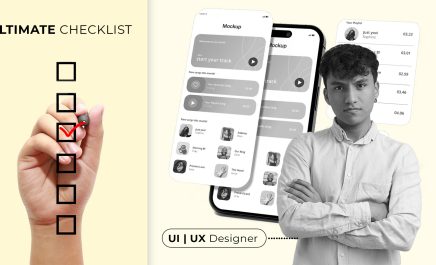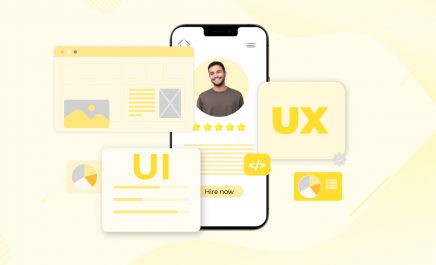Trusted by Global Brands
Recently Added UI/UX Designers in our Network
Aditi Narvekar
Graphic DesignerExp. 4 Years- Figma
- Mobile App
- Android
- 2D
- Design
- Adobe Photoshop
- Photoshop
- InDesign
- Ux
- Website Design
- and more
Ajan Jayaram
UI/UX DesignerExp. 4 Years- User Research
- Usability Testing
- Interaction Design
- Prototyping
- UX/UI Design
- Wireframing
- Figma
- and more
Arunima Mishra
Senior UI/UX design consultantExp. 6 Years- Adobe Illustrator
- Visual Design
- Design Tool
- Problem Solving Attitude
- Strong Attention to Detail
- and more
Bhoomika Shiyani
UX DesignerExp. 4 Years- UI Design
- UX Design
- Figma
- User Story
- Design
- SaaS Products
- Technical Documentation
- Ux
- and more
Hire UI/UX Designer in 4 Easy Steps
Tell us what you need
We'll get in touch with you to understand your requirements and preferences.Meet the top talent
Get 3 to 5 suitable, pre-vetted candidates in 48 hours.Interview with ease
Choose the candidate that aligns with your needs and we'll arrange an interview.Hire with confidence
Once you decide, we'll take care of the onboarding process for you.
With Uplers,
no more posting a job on multiple portals.









Various Skills that UI/UX Designers Possess
Access the talent network of 3M+ skilled professionals with 100+ skill sets
- User Research
- Information Architecture
- Visual Design
- Prototyping
- Usability Testing
- Wireframing
- User Experience Design
- HTML/CSS skills
- Adobe Photoshop
- Adobe Illustrator
- Figma
- jQuery
- Axure RP
- Sketch
Top Clients Reviews


Uplers helped to source and bring out the top talent in India, any kind of high-level role requirement in terms of skills is always sourced based on the job description we share. The profiles of highly vetted experts were received within a couple of days. It has been credible in terms of scaling our team out of India.


Uplers helped Tanium successfully grow their distributed team and achieve business goals in 2020, amidst the pandemic and talent shortage. Tanium was able to onboard the right fit on time to launch their marketing campaign, which played a crucial role in its growth story. Tanium found Uplers’ talents to be quick, efficient, and remarkable.


Uplers impressed me with their speed. They onboarded us, found a great candidate (Imran), and had us up and running in less than a week. The process was smooth, and while Imran had more experience than I initially expected, I felt confident he'd be a perfect fit.
Case Study
FAQs
Can I hire UI/UX designers who can work in fast-paced startup environments and adapt quickly to product changes?
Yes. We specialize in providing senior designers who've worked in lean, agile teams and understand iterative product development. They're equipped to work on MVPs, scale products, and deliver under tight timelines.
Do your designers come with experience in physical product simulations or domain-specific data design?
If you need designers with niche experience (like CAD, simulations, or engineering-heavy UI), we can source talent with domain familiarity. You can also request designers who have worked with similar user workflows or data-heavy interfaces.
How do you assess the design thinking and collaboration skills of your UI/UX talent?
We evaluate problem-solving ability, visual clarity, communication, and portfolio quality through interviews, behavioral questionnaires, and design assessments. Many of our clients also include a design task to evaluate critical thinking and process.
What if the designer needs to work in tight feedback loops with product and engineering teams?
Our designers are used to working directly with founders, engineers, and product leads. They're proactive, Slack- and Figma-ready, and comfortable with async workflows and regular design standups.
Do your UI/UX designers also handle front-end handoffs and design systems?
Absolutely. Designers are trained to work with tools like Figma, Zeplin, and Storybook, ensuring clean handoffs. Many also build and maintain component libraries, making collaboration with developers seamless.
How do I ensure the designer understands and fits into my design culture?
Before onboarding, we discuss your team's design ethos, tools, and workflows. You can also request a 2-week risk-free trial to evaluate alignment before making a long-term commitment.
Can I hire UI/UX designers through both contract and direct placement models?
Yes. We offer contract, contract-to-hire, and direct placement options. If you're still evaluating the right fit or need flexibility, we can guide you based on your business goals and cost structure.
What tools and platforms are your designers proficient in?
Our designers are proficient in industry-standard tools such as Figma, Adobe XD, Sketch, InVision, Miro, and more. We shortlist profiles based on your preferred tech stack and collaboration tools.
How do I know if the designer will match my time zone and communication preferences?
We filter candidates based on their willingness to work in your preferred time zone (PST, EST, GMT, etc.) and ensure strong English communication through our vetting and AI screening process.
What if the designer I hire doesn't meet my expectations post-onboarding?
We offer a free replacement policy and constant support via a dedicated Account Manager and Talent Success Coach to address any performance or alignment concerns proactively.
How much will it cost to hire dedicated UI/UX designers from Uplers?
Hire UI/UX Designers starting from $2500 per month and may vary depending on their skills and experiences.
Check Our Latest Blogs
 Read
ReadWhy Startups & SaaS Companies Are Hiring UI/UX Designers in 2025
- Prachi Shah
- March 23, 2025
- 5 Minute Read
- Blog
 Read
ReadThe Ultimate Checklist for Hiring UI/UX Designers in 2025
- Shachi Dixit
- February 19, 2025
- 6 Minute Read
- Blog
 Read
ReadTop 7 Skills to Look for When You Hire UI/UX Designers in 2024
- Prachi Shah
- September 24, 2024
- 5 Minute Read
- Blog
Discover handpicked, vetted talents.
Gain access to over 1.5M talents, each assessed using Advanced-AI.
If you are looking for a job, head to uplers.com/talent. If you are looking to hire, click to activate the form.

























